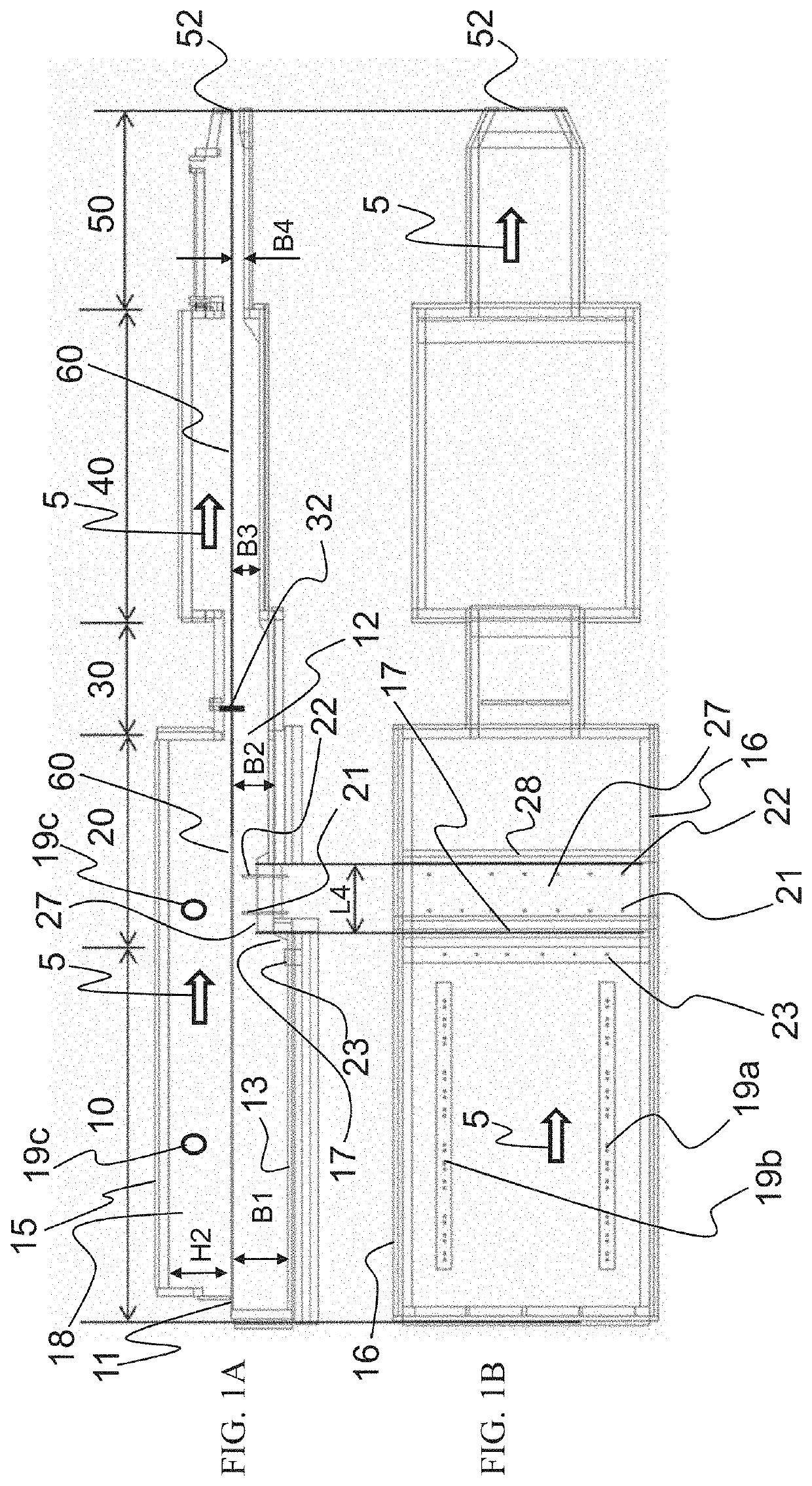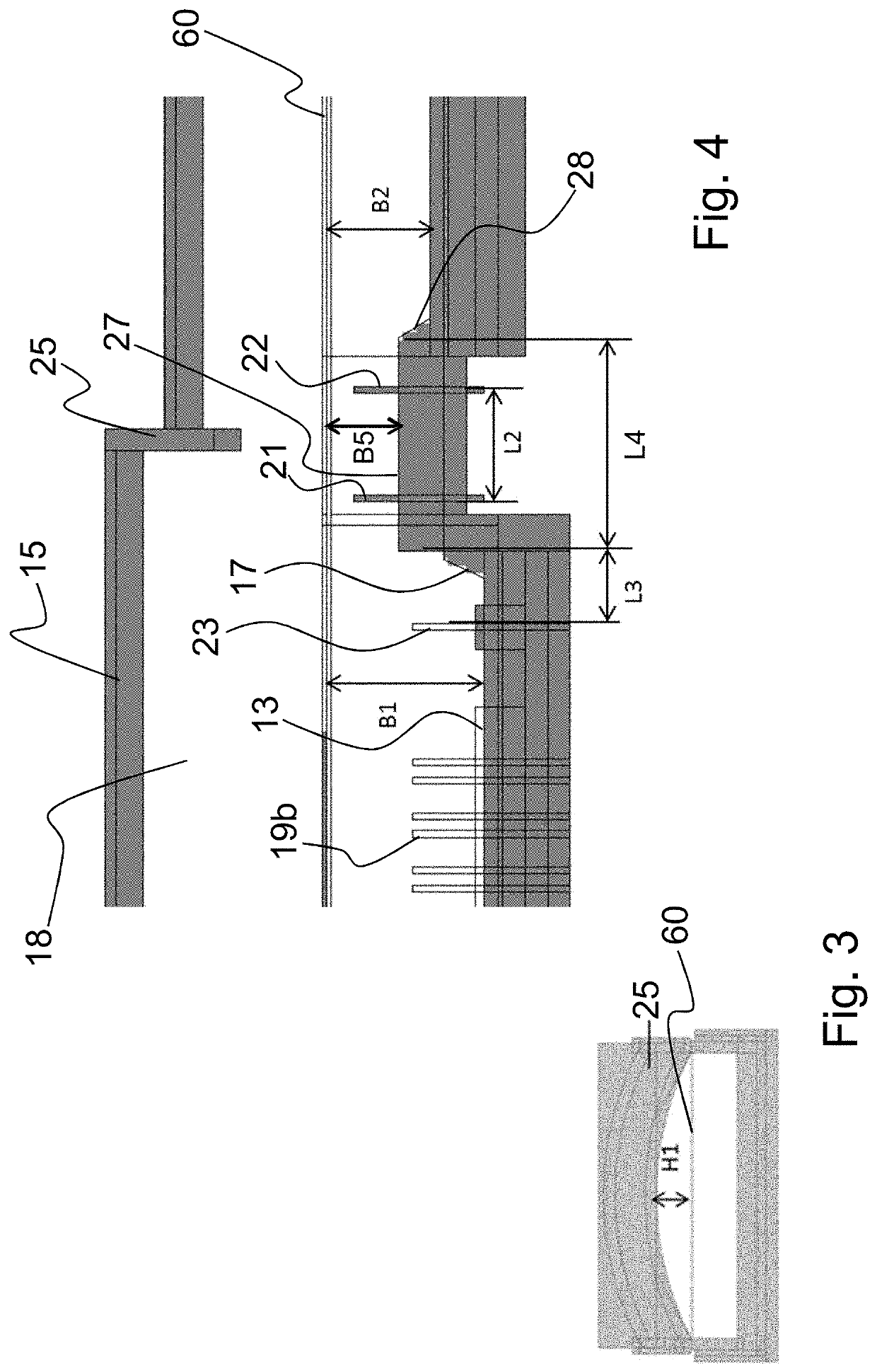Schmelzwanne und glasschmelzanlage
a glasschmelzanlage and glass melt technology, applied in the field of melt tanks, can solve the problems of insufficient bubble escape and high energy consumption of glass melt production, and achieve the effects of reducing the width of the basin, and reducing the flow speed of glass mel
- Summary
- Abstract
- Description
- Claims
- Application Information
AI Technical Summary
Benefits of technology
Problems solved by technology
Method used
Image
Examples
Embodiment Construction
[0063]FIGS. 1A and 1B shows a first exemplary embodiment of a glass melting plant according to the present invention having a melt tank according to the present invention, suitable for example for a daily output of 400 t of molten glass.
[0064]The melt tank includes the segments melting segment 10 and refining segment 20. The melt tank is followed by a constriction region 30, a conditioning region 40, and a channel 50. The starting materials for the production of the glass melt (primary raw materials and, possibly, shards) are continuously supplied at inlet opening 11 of the melt tank by a feed device (not shown). The starting materials are in particular melted in the melting segment 10 of the melt tank, and move (flow) together with glass melt 60 through refining segment 20, to outlet opening 12 of the melt tank, and further through constriction region 30, conditioning region 40, and channel 50, until they reach glass outlet opening 52. The direction of flow of glass melt 60 is indi...
PUM
| Property | Measurement | Unit |
|---|---|---|
| depth | aaaaa | aaaaa |
| depth | aaaaa | aaaaa |
| depth | aaaaa | aaaaa |
Abstract
Description
Claims
Application Information
 Login to View More
Login to View More - R&D
- Intellectual Property
- Life Sciences
- Materials
- Tech Scout
- Unparalleled Data Quality
- Higher Quality Content
- 60% Fewer Hallucinations
Browse by: Latest US Patents, China's latest patents, Technical Efficacy Thesaurus, Application Domain, Technology Topic, Popular Technical Reports.
© 2025 PatSnap. All rights reserved.Legal|Privacy policy|Modern Slavery Act Transparency Statement|Sitemap|About US| Contact US: help@patsnap.com



